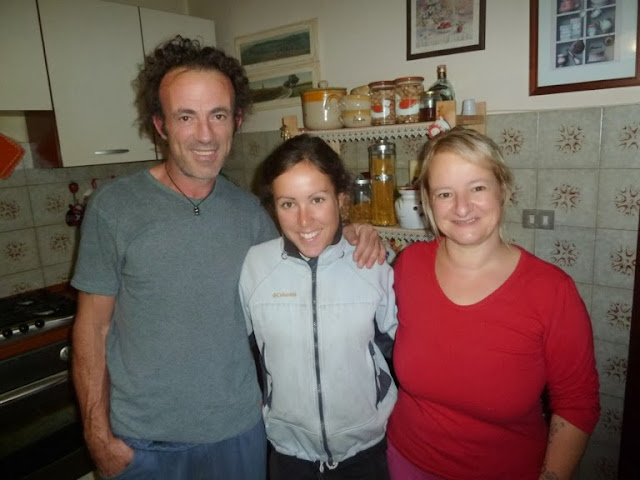As I
stood at the kitchen bench, the grey rice water draining down the plughole in
preparation for another camping meal, I had a moment. One of those moments
where it’s like I look down from above, I picture the whole world and I zoom in
on my own little figure, out here amidst the mountains of Southern Morocco. The
sun’s dipping low, lighting the rocks all around into a deep and earthy red,
the tops of the palms are silhouettes, fanning out as if exploding fireworks.
In the still quietness of the dusk an Arabic call is wailed out into the night,
the time to pray has arrived. A shepherd, clothed in brown camel hair cloak and
vibrant blue head scarf, quietly leads his flock to eat from the scrub before retiring to home and
shelter. The first stars are faintly twinkling, the moon will rise to join them
shortly in a great display of light in the darkness. Here at the bench it’s
just little me, just washing the rice. It’s one of those moments where I think
“Wow, how the heck did I end up here?!”
The
recent days cycling through Morocco have seen us on a steadily westward course,
each day inching us further along the map and closer to the Atlantic Ocean, our
finish line for this the major phase of our journey. Within our larger
pilgrimage to the Atlantic we were on pilgrimage to Tafraout, a town of 3000
people nestled in the Anti-Atlas mountains, our place to celebrate Christmas.
In
so many ways these recent days zeroing in on Tafraout have encompassed so many
of the reasons I would give you for loving bicycle travel. Let me tell you why.
We’ve
cycled for hours in wide open spaces on the edge of the desert, the land only
disappearing as it curves away over the horizon, and then in the space of mere
minutes we’ve entered spectacular gorges and hills of jagged rocky peaks. On
moving from the edge of the Sahara into the Anti-Atlas mountains the landscapes
have continually changed and been pretty inspiring in their beauty and variety.
Yet
inspiring landscapes alone would not satisfy. Dotted along our way, seemingly
at just the right interval for a cyclist, has been village after village. Foum-Zguid,
Tissint, Tata, Tagmoute, Anamer, Igherm, Azoura, Ait-Abdallah. Beforehand, for
us, each is just a name on a map, afterward they are a memory with a
distinctive event or character etched in our mind. In common each has food,
water and a friendly welcome, and yet each has their own distinctively unique
character. Some villages bustle with noise and activity, chaos to us but normal
daily life for locals. Other villages are quiet, the people industriously
working away at what they do, often hidden amongst the palms, the almonds or
the olive trees. We’re only aware of anybody there by the flash of a colourful
headscarf in the trees or quiet voices chatting one to another. Still another
village, from a distance seems void of activity or spirit, yet upon entering its
streets are found to be crowded with lively school students pouring out all
over the streets.
So
often along our way the chance take a break, to sit, to eat and drink, to watch
life go by has become a real highlight of a riding day. Once we’ve bought our
bread or biscuits or fruit and we’ve roved around in search of a place to sit,
a friendly face soon emerges carrying a table and chairs and inviting us to sit
and rest. Sometimes the locals will sit with us to chat, at other times they
will provide us with what we need and then just let us go about our business of
eating, resting and observing. What we observe is always fascinating, often
entertaining, and only occasionally disturbing!
Being
so close to Europe Morocco sees plenty of foreign tourists, mainly four wheel
drive enthusiasts and retired French campervan travellers. As a result a good
network of camping grounds are spread across much of the country. It’s great to
have good accommodation and all the conveniencies we need, within a town centre,
without having to check into some crusty hotel. Even better though have been
our wild camps, the real pinnacle of cycle touring accommodation options. Wild
camps have not been so common for us in Morocco due to the difficulty in
finding secret places in such open country, but they’ve been real gems when we have
come upon suitable spots. In recent days we developed a routine of arriving in
time to get the tent pitched and life sorted before brewing a cup of tea and
sitting in the last light to watch the sunset. Several nights we were fortunate
enough to then turn and watch the moonrise just minutes later! To complete our
classic African camping experience I thought I’d better be the man and light a
fire. I failed dismally yet Anna in her graciousness assured me that these
dry-land trees must surely have developed fireproof adaptations that were
resisting my efforts!
To
cycle through varied landscapes on both sealed and more adventurous roads, to
enter villages and experience their culture and kindness, to observe local life
happening all around us, to have some conveniences yet the freedom to be camped
in the wild, all these things make for a truly wonderful cycling experience. At
the end of it all we descended into Tafraout for Christmas. Knowing very little
about the place other than seeing on our map that it had a campsite, we’d taken
a bit of a punt. Our punt paid off and the mini pilgrimage was complete. Just
one phase left on our way to the Atlantic!
 |
| Travelling through the horizontal |
 |
| Travelling through the vertical |
 |
| Travelling smooth ways |
 |
| Travelling rough ways |
 |
| Bustling villages |
 |
| Energetic markets |

















































